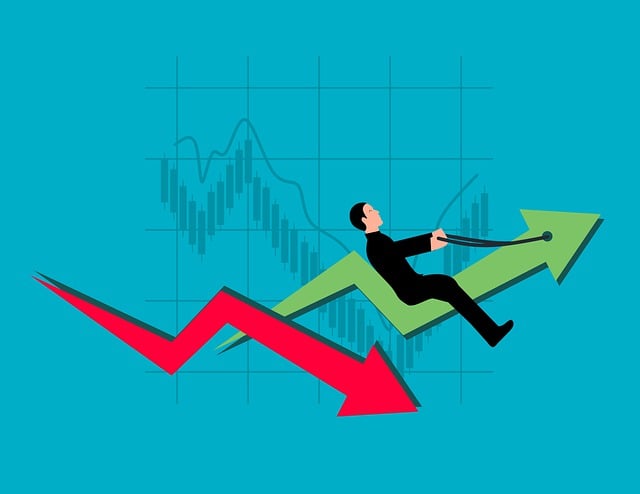Day trading stocks can be an exciting and potentially lucrative activity, but it requires a careful balance between the desire for profit and the reality of the risks involved. In this guide, we will delve into the intricacies of day trading, focusing on how to effectively manage the balance between the profit potential and the inherent risks. Whether you’re a novice trader or an experienced investor looking to refine your strategy, understanding the nuances of day trading is essential for long-term success.
Table of Contents
Understanding Day Trading

Day trading involves buying and selling stocks within the same trading day. The goal is to capitalize on small price movements in highly liquid stocks. Unlike traditional long-term investing, where the objective is to hold onto stocks for years, day trading requires quick decision-making and a thorough understanding of market dynamics.
Day Trading Stocks: Balancing Profit Potential with Risk is about understanding that while the potential for high returns exists, the risks are equally significant. Day traders need to be adept at reading market trends, executing trades quickly, and managing their emotions effectively.
The Profit Potential in Day Trading

One of the most attractive aspects of day trading is the possibility of earning significant profits in a short period. Unlike long-term investing, where returns are accumulated over years or decades, day trading allows for the rapid realization of gains. However, this profit potential is not guaranteed and comes with substantial risk.
- Leverage and Margin: Many day traders use leverage to increase their buying power. By borrowing funds, traders can control larger positions than their capital would typically allow. While this can amplify profits, it can also magnify losses, making it a double-edged sword.
- Volatility: Stocks that are more volatile tend to be more profitable for day traders, as they offer more significant price swings within a single day. However, high volatility also means higher risk, as the stock price can move against the trader’s position quickly.
- Liquidity: Day trading stocks with high liquidity ensures that there is always someone on the other side of the trade. High liquidity minimizes the risk of getting stuck in a position that cannot be easily exited.
- Short Selling: Day traders can profit from both rising and falling markets by short selling stocks. This strategy involves selling a stock you do not own, with the intention of buying it back at a lower price. While this can be profitable, it also carries a high level of risk, as losses on a short position are theoretically unlimited.
The Risks of Day Trading

While the potential for profit is enticing, the risks associated with day trading are equally formidable. Day Trading Stocks: Balancing Profit Potential with Risk involves acknowledging and managing these risks effectively.
- Market Volatility: The same volatility that can lead to significant profits can also result in substantial losses. Day traders must be prepared for the possibility that the market will move against them quickly and without warning.
- Emotional Stress: The fast-paced nature of day trading can lead to high levels of stress. Emotional decision-making, such as chasing losses or overtrading, can result in significant financial losses.
- Regulatory Requirements: In many countries, including the United States, day traders are subject to specific regulations. For example, the Pattern Day Trader (PDT) rule requires that traders maintain a minimum account balance to engage in frequent day trading. Failure to meet these requirements can lead to trading restrictions.
- Transaction Costs: Day traders execute multiple trades daily, which can result in high transaction costs. These costs, including commissions and spreads, can eat into profits and increase the overall risk.
- Loss of Capital: Due to the leveraged nature of many day trading strategies, it is possible to lose more than the initial investment. This makes risk management and the use of stop-loss orders essential.
Strategies for Balancing Profit Potential with Risk

To succeed in Day Trading Stocks: Balancing Profit Potential with Risk, traders must employ strategies that mitigate risk while maximizing the potential for profit. Here are some key strategies:
- Risk Management: The cornerstone of any successful day trading strategy is risk management. This involves setting stop-loss orders to limit potential losses on a trade and determining the maximum amount of capital to risk on each trade.
- Technical Analysis: Day traders rely heavily on technical analysis to make trading decisions. This involves analyzing price charts and using indicators such as moving averages, Relative Strength Index (RSI), and Bollinger Bands to identify potential entry and exit points.
- Trading Plan: A well-defined trading plan is essential for balancing profit potential with risk. This plan should outline the criteria for entering and exiting trades, the amount of capital to be risked on each trade, and the overall risk tolerance.
- Diversification: While day trading typically involves focusing on a small number of stocks, diversifying across different sectors or asset classes can help mitigate risk. This reduces the impact of a poor performance in a single stock or sector.
- Continuous Learning: The stock market is constantly evolving, and successful day traders continuously educate themselves on new strategies, market conditions, and economic factors that could impact their trades.
- Keeping Emotions in Check: Emotional control is critical in day trading. Fear and greed can lead to impulsive decisions that result in losses. Successful traders stick to their trading plan and avoid making emotional decisions.
- Scaling In and Out: Instead of entering or exiting a position all at once, traders can scale in and out of trades. This strategy allows traders to take partial profits or cut losses gradually, reducing the impact of volatility on the overall position.
- Using Technology: Trading platforms offer tools like automated trading, which can help in executing trades quickly and without emotion. Automated systems can also backtest strategies against historical data, helping traders refine their approaches.
- Avoiding Overtrading: One of the common pitfalls in day trading is overtrading. This involves placing too many trades in a day, often due to the fear of missing out. Overtrading can increase transaction costs and lead to emotional exhaustion, both of which can negatively impact profitability.
- Risk-Reward Ratio: Every trade should have a favorable risk-reward ratio. This means that the potential profit on a trade should outweigh the potential loss. A common rule of thumb is a 2:1 or 3:1 risk-reward ratio.
The Importance of Discipline in Day Trading
Discipline is crucial when Day Trading Stocks: Balancing Profit Potential with Risk. Without discipline, even the best trading strategies can fail. Discipline involves sticking to your trading plan, managing your risk, and avoiding emotional decision-making.
- Adherence to the Trading Plan: A trading plan is only effective if it is followed. Deviating from the plan, such as increasing the size of a trade on a whim or holding onto a losing position, can lead to significant losses.
- Consistent Review and Improvement: The most successful day traders regularly review their trades and strategies. This allows them to identify mistakes, refine their approaches, and stay aligned with their risk tolerance and profit goals.
- Patience: Patience is essential in day trading. Not every day will present profitable trading opportunities, and forcing trades can lead to losses. Waiting for the right setups, even if it means sitting out for a day or two, is crucial for long-term success.
- Understanding Market Conditions: The stock market is influenced by various factors, including economic data releases, geopolitical events, and market sentiment. Day traders must stay informed about these factors and understand how they can impact the market.
- Knowing When to Walk Away: One of the most challenging aspects of day trading is knowing when to walk away. Whether it’s taking a break after a losing streak or deciding to step away from the market altogether, knowing when to stop is vital for preserving both capital and mental well-being.
Day Trading Stocks: Balancing Profit Potential with Risk requires a careful blend of strategy, discipline, and emotional control. While the potential for profit is significant, the risks are equally substantial. By understanding the market, employing sound risk management techniques, and maintaining discipline, day traders can navigate the challenges of day trading and increase their chances of success.
From Charts to Profits: A Beginner’s Guide to Technical Analysis is essential for day trading stocks, helping traders balance profit potential with risk effectively.
Ultimately, day trading is not for everyone. It requires a specific mindset, a deep understanding of the markets, and the ability to act quickly and decisively. For those who can master these elements, day trading can be a rewarding endeavor, offering the potential for significant financial gains. However, it’s essential to remember that every trade carries risk, and the key to long-term success lies in balancing that risk with the potential for profit.
FREQUENTLY ASKED QUESTIONS
1)What is the tax on day trading?
In India, the tax on day trading is typically classified as either short-term capital gains (STCG) or business income. If considered STCG, profits are taxed at 20% , provided the securities transaction tax (STT) is paid. However, if day trading is seen as a business activity due to frequent trades, the profits are taxed as business income at the individual’s applicable income tax slab rate, which ranges from 5% to 30%. Losses from day trading can be set off against other business income and carried forward for up to eight years to offset future gains.
2)Is day trading gambling?
Day trading is often compared to gambling due to the high-risk nature of the activity and the potential for significant financial losses. However, day trading and gambling are fundamentally different.
Day trading involves buying and selling financial instruments like stocks, forex, or commodities within the same trading day to capitalize on small price movements. Successful day traders rely on analysis, strategies, and market knowledge to make informed decisions, although there is no guarantee of profit.
Gambling, on the other hand, relies primarily on chance, with outcomes largely unpredictable and independent of skill or analysis. While both involve risk, day trading is a skill-based activity, whereas gambling is luck-based.





